Whether you are an experienced gardener or a beginner, having the right type of soil is essential for a thriving garden. Sandy garden soils are one of the most popular types of soil and can be used for a variety of plants. But what exactly is sandy soil, and what makes it so popular? In this article, we will explore everything you need to know about sandy garden soils, including their characteristics, benefits, and how to best use them in your garden. Sandy soil is a type of soil made up of large particles of sand. While some gardeners may shy away from sandy soil because it does not retain water or nutrients, it can be beneficial in certain situations.
Sandy soil is well-drained, warms up quickly in the spring, and provides good aeration for the root systems of plants. In addition, sandy soil is easy to work with and is less prone to compaction.
Using Sandy Soil in Gardens
When using sandy soil in gardens, it's important to choose plants that are suited to the soil's composition. Plants that prefer sandy soils include geraniums, lavender, rosemary, poppies, and vegetables like tomatoes and cucumbers. Additionally, some trees such as white pine, willow, and apple can also do well in sandy soils. In general, sandy soil needs to be amended with organic matter such as compost or manure in order to retain moisture and provide nutrients.Adding amendments can also help adjust the pH level of the soil if necessary. To test the pH level of sandy soil, gardeners can purchase a basic home testing kit or have their soil tested by a local agricultural extension office.
Plants That Don't Do Well in Sandy Soil
Some plants don't do well in sandy soils because they require more moisture and nutrients. These include azaleas, rhododendrons, and hydrangeas. Additionally, many vegetables such as beans, peas, and broccoli prefer loamy soils with more organic matter.Adding Organic Matter to Sandy Soil
Adding organic matter to sandy soil is essential for improving its structure and increasing its ability to retain moisture and nutrients.Good sources of organic matter include compost, aged manure, leaf mold, grass clippings, and shredded bark. Organic matter can be added to the soil before planting, or mixed into the existing soil around existing plants. Additionally, gardeners can apply a thin layer of mulch around plants to help retain moisture in the soil. Sandy garden soils can be beneficial in certain situations and are easy to work with. By choosing plants that are suited to the soil's composition and adding organic matter regularly, gardeners can ensure their plants will have access to the water and nutrients they need.
Benefits of Sandy Soil
Sandy soil has many benefits for gardeners.In comparison to clay or loam soils, sandy soils are much lighter and more porous. This improves drainage and aeration in the soil, allowing for better root growth and plant health. Sandy soils are also known for their water retention capabilities, as they can absorb and retain moisture for longer periods of time. This is especially beneficial for plants that are sensitive to drought or require consistent moisture. Because of its high porosity, sandy soil is also great for aerating plant roots.
It allows for greater oxygen circulation and allows water to permeate the soil more quickly, reducing waterlogging. Additionally, sandy soil contains fewer nutrients than other types of soil, so it’s ideal for growing plants that don’t need a lot of fertilizer. Overall, sandy soil is a great option for gardeners who are looking for improved drainage and aeration, better water retention, and fewer nutrients. With proper maintenance, sandy soil can be a great choice for growing a variety of plants.
Using Sandy Soil in Your Garden
Using Sandy Soil in Your GardenSandy soil can be beneficial for gardening, but it does require some special care to ensure your plants thrive.To use sandy soil in your garden, you should start by adding organic matter like compost or mulch to improve water retention and help retain nutrients. You can also consider using raised beds so that you can better control the soil composition and add mulch or compost as needed. When planting in sandy soil, you may also want to add a slow-release fertilizer, such as a granular fertilizer, or a liquid fertilizer. This will help ensure your plants have the nutrients they need to thrive. Additionally, you may want to consider mulching your plants with shredded leaves or wood chips, as this will help retain moisture and provide added nutrients. Finally, it’s important to water your plants regularly when using sandy soil.
Sandy soil doesn’t retain moisture as well as other types of soil, so you need to make sure your plants are getting enough water. Additionally, you may want to consider using a drip irrigation system or a soaker hose to ensure your plants receive a steady supply of water.
What is Sandy Garden Soil?
Sandy soil is a type of soil that has large particles, which are visible to the naked eye. It has a gritty feel when rubbed between your fingers and does not hold together very well. In comparison to other types of soil such as loam or clay, sandy soil is less dense and contains fewer nutrients. The particles in sandy soil are much larger than those found in loam and clay, resulting in quick drainage and lower water retention.This can be beneficial for some plants, especially those that need well-drained soil, but can be detrimental to others. Sandy soil also doesn’t hold onto nutrients very well, meaning that you will need to regularly fertilize the soil in order to maintain healthy plant growth. Overall, sandy soil is best suited for plants that don’t need a lot of water and nutrients, such as cacti and succulents. It is also well-suited for plants with shallow root systems, since the large particles allow for better air circulation and quick drainage.
Adding Organic Matter to Sandy Soil
Organic matter is essential to create a healthy soil structure for sandy soils. Adding organic matter helps to improve the water and nutrient holding capacity of sandy soils, as well as reduce soil erosion.Furthermore, organic matter helps to increase the overall fertility of sandy soils, and can even help to reduce soil compaction. When adding organic matter to sandy soils, it is important to use the right kind of material. Compost, manure, and leaf mulch are all excellent options for adding organic matter. For best results, it is best to incorporate them into the soil using a tiller or other gardening tool.
Additionally, it is important to make sure that the organic matter is added in small amounts at a time. Adding too much organic matter at once can cause the soil structure to become water-logged and can also lead to anaerobic conditions. It is also important to note that while organic matter is beneficial for sandy soils, too much of it can lead to nutrient leaching. Therefore, it is important to use a balanced approach when adding organic matter, and to ensure that the soil is tested periodically to make sure the nutrients are in balance.
Types of Plants for Sandy Soil
Gardening in sandy soil can be a challenge, as it is more difficult to retain moisture and nutrients.However, there are several plants that thrive in this type of soil. For example, strawberries, carrots and corn all do well in sandy soil. Strawberries are a great option for sandy soil because they require very little maintenance and have a high yield. The soil should be well-draining and slightly acidic.
Carrots also grow well in sandy soil, as their root systems can penetrate the soil easily. Corn is another great option for sandy soil, as it can tolerate drought conditions and requires lots of space. In addition to these types of plants, there are many other vegetables and flowers that can be grown in sandy soil. Eggplants, peppers, tomatoes, snap peas, marigolds, daisies and cosmos are all good options for gardens with sandy soil.
When planting in sandy soil, it is important to make sure the soil is amended with compost or other organic materials. This will help improve the nutrient content and water retention of the soil. Additionally, adding mulch around the plants will help to retain moisture and protect the roots from the sun.
Testing the pH Level of Sandy Soil
Testing the pH level of sandy soil is an important part of gardening.Sandy soils tend to have a low pH level, which can be beneficial for certain plants, but may need to be adjusted to create a suitable environment for different types of plants. The pH level of sandy soil can be tested using a soil test kit. These kits are available at most garden stores and come with instructions on how to use them. Generally, the test involves taking a sample of soil and adding it to a solution that will cause a color change, which is then compared to a chart to determine the pH level.
If the pH level is too low or too high for the plants being grown, there are a few ways to adjust it. Adding fertilizers with high levels of nitrogen or sulfur can help to raise the pH level, while adding sulfur-based materials such as sulfuric acid or aluminum sulfate can help to lower it. It is important to be careful when adjusting the pH level and not to make any drastic changes without consulting with an expert. By testing and adjusting the pH level of sandy soils, gardeners can create an optimal environment for their plants. This will help ensure that the plants grow healthy and produce good yields.
In conclusion, sandy garden soils are beneficial in that they have large particles of sand that help to improve water and nutrient retention. They are best suited for plants that prefer dry soils, such as cacti and succulents. To ensure the best results when using sandy soils, gardeners should test the pH level of the soil and add organic matter to improve fertility. Gardeners should also experiment with different types of soils in their gardens in order to find what works best for their environment.
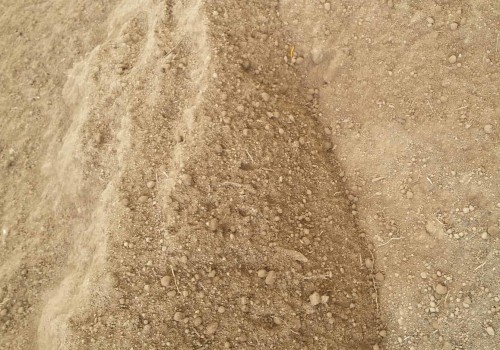
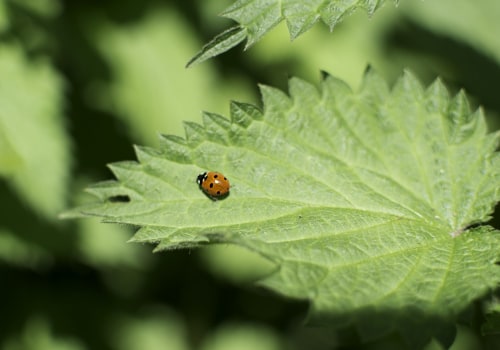
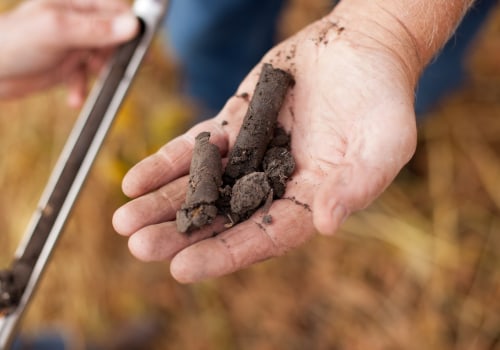
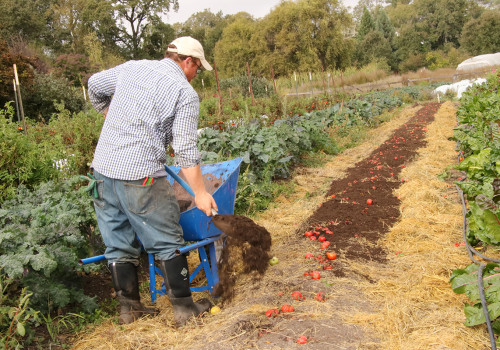
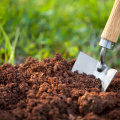
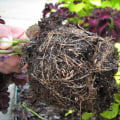

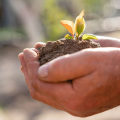
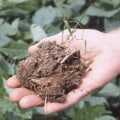
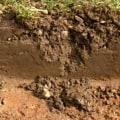
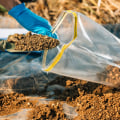
Leave a Comment